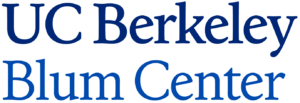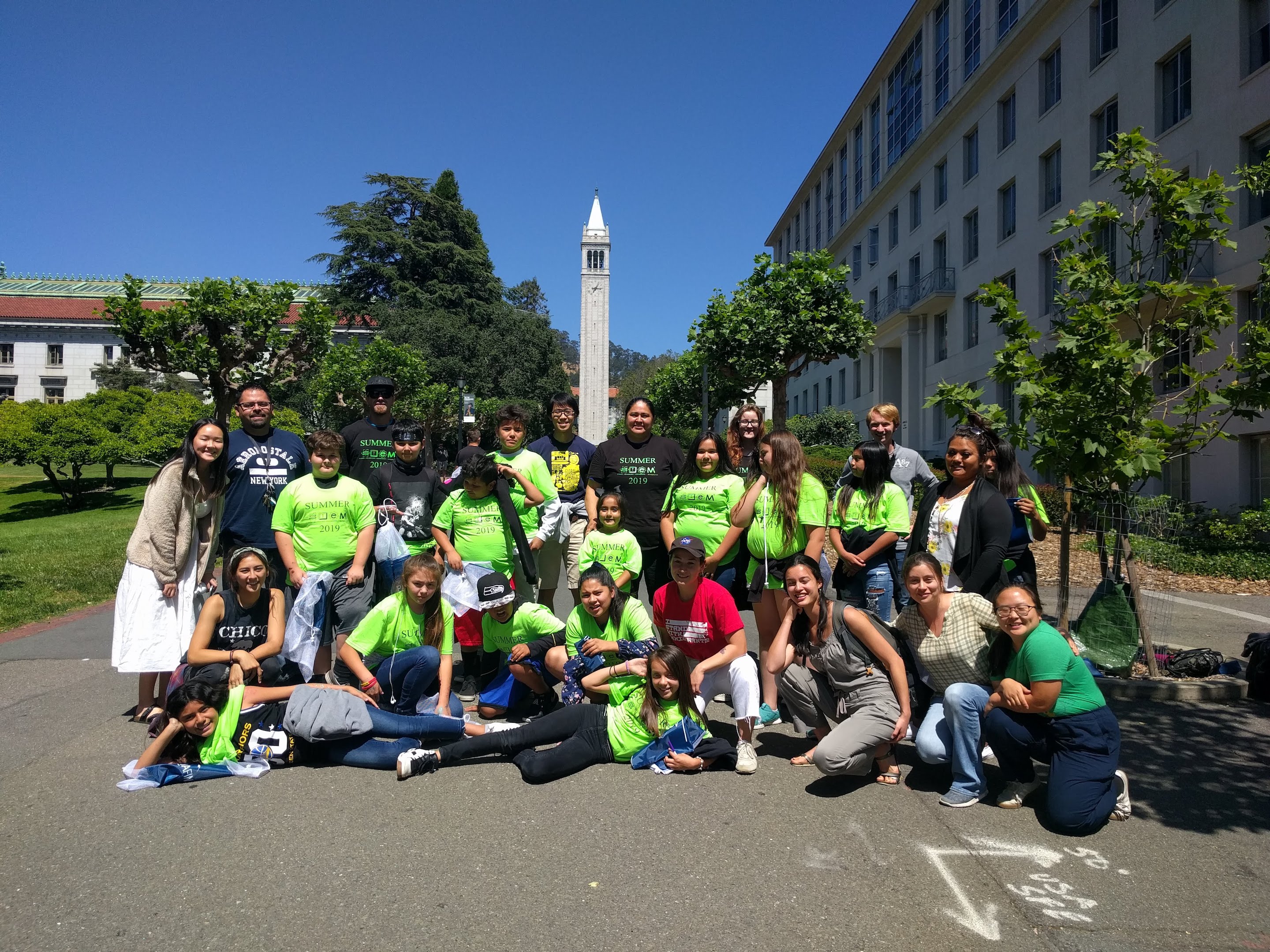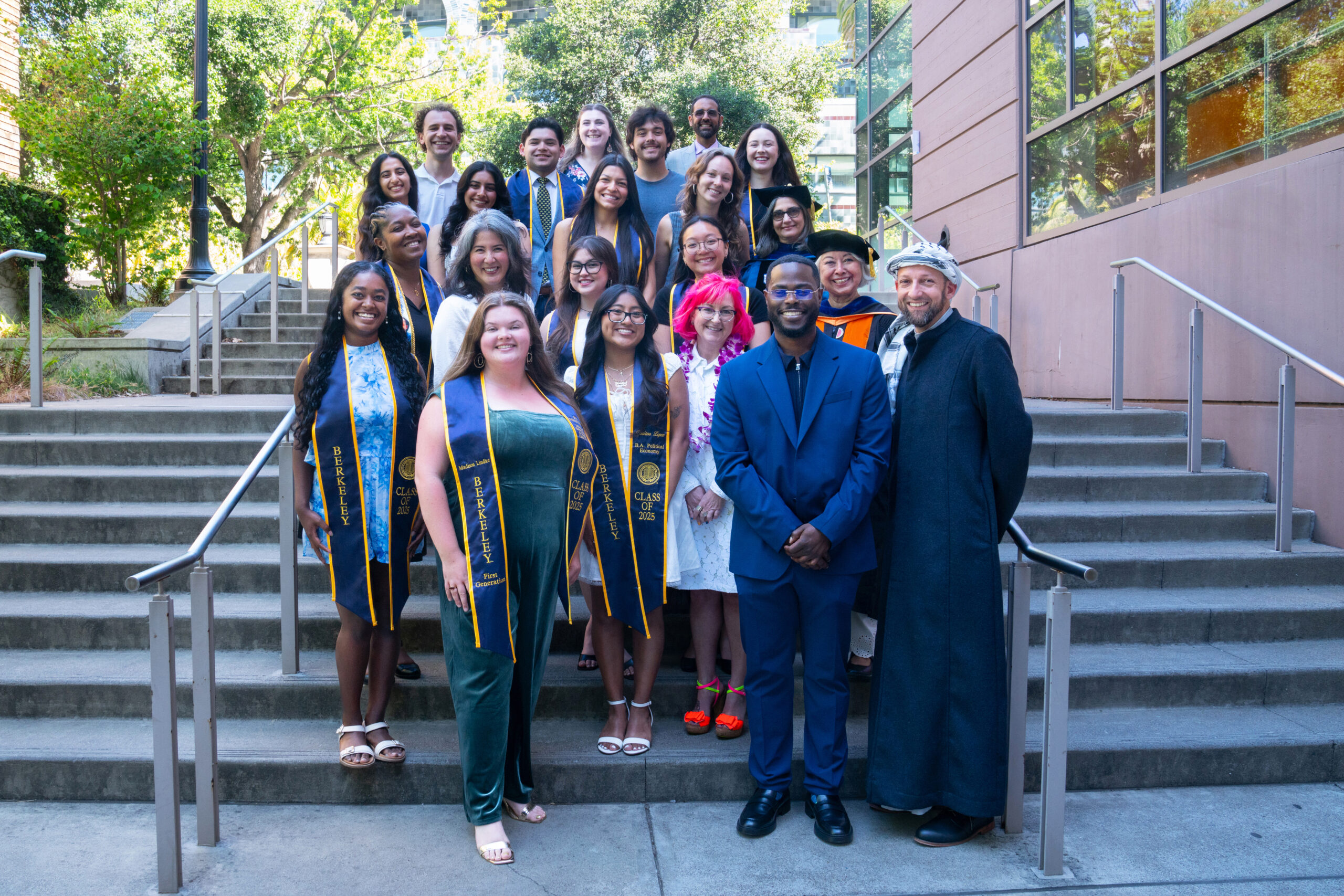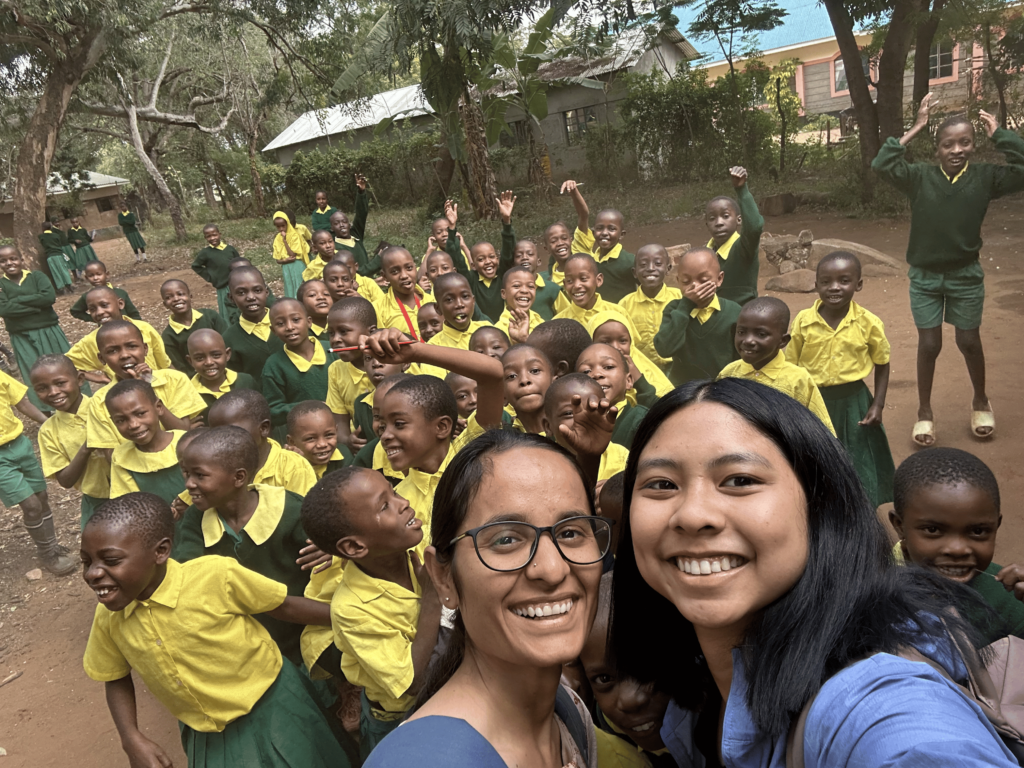This summer, on the same day that Joy Harjo was named the first Native American Poet Laureate, a delegation of students and educators from the Pinoleville Pomo Nation and Santa Clara tribes of Northern California assembled in Blum Hall at UC Berkeley.
The group came to Berkeley as part of a summer STEAM (science, technology, engineering, art, and math) program organized by Global Poverty & Practice students working under Blum Center Education Director Alice Agogino and Yael Perez, a Blum Center researcher who with Agogino and the UC Berkeley CARES group has been involved in collaborations with the tribes for over a decade.
Perez read Harjo’s “The Morning I Pray for My Enemies” to the assembled 20 middleschoolers:
And whom do I call my enemy?
An enemy must be worthy of engagement.
I turn in the direction of the sun and keep walking.
It’s the heart that asks the question, not my furious mind.
The heart is the smaller cousin of the sun.
It sees and knows everything.
It hears the gnashing even as it hears the blessing.
The door to the mind should only open from the heart.
An enemy who gets in, risks the danger of becoming a friend.
These words set the tone for the visit, said Perez, who later explained:
“Over the years of our collaboration with the Pinoleville Pomo Nation, there have been several visits to campus. These visits are sensitive and loaded as they make injustice more visible, forcing all of us—the Native citizens, the campus representatives, and the students—to acknowledge it. Similar to previous visits, this tour of the Pomo youth is ingrained in a soil of historic wrongdoing and current injustices, of which the youth are aware.”
Perez, who earned her PhD in architecture from UC Berkeley with a dissertation on a collaborative design for a cultural center to celebrate Pomo artifacts, said that the highpoint of the visit for her was the afternoon at the Phoebe A. Hearst Museum of Anthropology, which houses one of the largest collections of Native American remains and artifacts in the country.
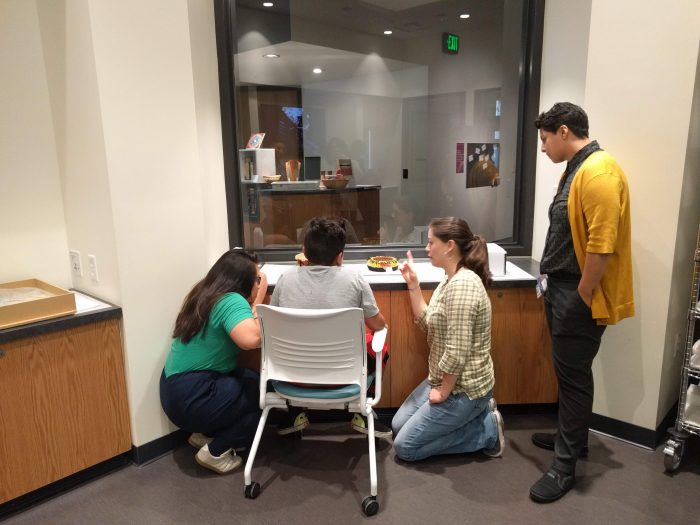
There, museum employees laid out a dozen Pomo objects from Mendocino County—decades-old baskets, necklaces, and musical instruments—which had been brought up from the museum’s closed-off rooms for the Native students to observe and, in some cases, touch and hold.
The students were told there are over 3,000 Pomo objects in the museum. On the TV screens around them, they could see footage of basket making video recorded by anthropologists. One 13-year-old boy asked, “How did the museum get these things?” to which the docent replied: “They were acquired by anthropologists.”
As the youth approached a table that included a small sample of artifacts from his home county, one of the Pomo girls picked up a clapper and started to clap a traditional rhythm. With the rhythm filling the room, another student started to sing a traditional song and one of the boys commenced a Pomo dance circling the room.
“The TV screens and computer stations depicting the rich collection of artifacts preserved in the museum faded away, as the youth took over the room enacting their culture,” recounted Perez. “I felt in that brief moment that the youth experienced their capacity to engage and transform the dominant culture, making the institution adapt to indigenous ways of knowing, as opposed to gazing at a display that encloses the artifact and distances the visitors from it.”
The purpose of the June 21 UC Berkeley visit was not to question the Hearst Museum’s ownership of artifacts per the Native American Graves Protection and Repatriation Act of 1990. Rather, the visit was a means to introduce the Native students what the university might offer them—after a summer of instruction from undergraduate students affiliated with the Blum Center’s Global Poverty & Practice minor, including Derek Cai, Mira Cheng, Chan Gao, Dylan Kennedy, Camille Kuo, Kolbjorn Rehn, Sarah Xu, and Jenina Yutuc.
On the agenda was a visit to Jacobs Hall, where Native students took a tour of some of the maker labs, marveling at 3D printers, laser cutters, wood fabrication equipment, and soldering irons. Mira Cheng, a molecular and cellular biology major and GPP minor, watched with infectious smile as the middle school students oohed and aahed at the equipment. “We’ve all gotten really attached to the students. I just want to mentor them all forever,” she said.
Camille Kuo, an intended conservation and resource studies major and GPP minor, said that beyond co-designing the summer program with PPN educators and managing high-energy middle school students, “I learned about the layers of bureaucracy and logistics, the importance of communication when you’re dealing with three different entities—UC Berkeley, the tribal office, Ukiah school district—and what it means to work in this kind of complex educational space.”
Educational access and exchange are at the heart of the PPN-UC Berkeley collaboration. Angela James, vice chair of the PPN’s Tribal Council, remarked last summer that the days of cultural and educational isolation are ending for her tribe in California. “My goal is to open the minds of youth and introduce them to college and science,” said James, “and teach them how to build positive working relationships with people outside their immediate circle.”
Clayton Freeman, project assistant for the Pomo Youth College Career Success Project, agreed that campus visits strengthen his students’ interest in and comfort level with going to college. Sitting on a bench in the sun outside the Hearst Museum, he said, “Growing up, I never saw the things we saw today—labs inside the university, this museum.”
Another student chaperone, Sparrow Steele, noted that she was 13 when CARES first started working with the Pinoleville Pomo Nation. “The STEAM workshops have been intense,” said Steele. “The kids see them as different from school, and it feels like the UC Berkeley people are more connected with the kids–there’s more energy.”
Josephina Spurlock, a 12-year-old member of the Round Valley Tribe who lived with her uncle in Ukiah this summer to attend the STEAM workshops, said she appreciated learning math in a more hands-on way, “which made it easier to understand.” Spurlock, who is a 4.0 student and class president at Round Valley Middle School, said she can see herself going to Berkeley, playing on the basketball team and studying engineering and photography. She would be the first person in her family to attend college.
When asked how she will accomplish this goal, she explained, “I have to make sure that work comes before goofing off. My mom wants me to get a good education. She did not go to college because she became pregnant with me,” adding: “At school, everyone calls me the goody two shoes. That makes me feel proud.”
Esmerelda Castanon, who is also 12 and attended the last two years of the STEAM camp, is likewise aspiring to college. The PPN tribal member said she is aiming for a career as a civil lawyer, because “there are everyday problems with race that the law can help with.”
Native Americans and Alaska Natives make up roughly 2 percent of the population in California and only 1 percent of undergraduate students at UC Berkeley. Among the 8,447 graduate students matriculated at Cal in 2018-2019, only 59 are Native American/Alaska Native.
Patrick Naranjo, a member of the Santa Clara Pueblo and the director of UC Berkeley American Indian Graduate Program, urged the Pinoleville Pomo Nation students to think of their futures in higher education.
“Hopefully,” remarked Perez, “the aspirations expressed by the youth on this campus visit will be reflected in UC Berkeley statistics for 2024.”
